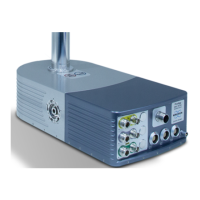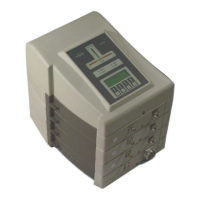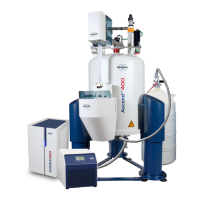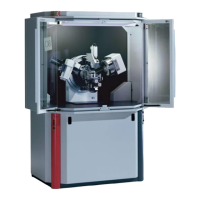CryoProbe User Manual BRUKER 63 (107)
Monitoring and
Maintenance 6
6000000
In this chapter, the various indicators for the CryoProbe System status are intro-
duced. The system should be monitored continuously in order to preserve perfor-
mance, identify emerging problems early, prevent serious damage, and to trace
faults back to their origins.
Actual problems, faults, and solutions are discussed in "Troubleshooting" on
page 71.
NOTE: B
RUKER warranty expires if the CryoProbe was opened by unautho-
rized personnel.
Displays & Diagnostics 6.1
0
See "Status display by the control buttons" on page 20
for an “explanation” of
the blink codes.
CryoTool interface 6.1.1
The CryoController inside the CryoCooling Unit operates the CryoPlatform auto-
nomously. Its status reports and error messages can be displayed on a PC under
Windows™ 95/NT4 by the CryoTool software. The displaying computer is con-
nected directly to the CryoController using an RS232 interface. Most CryoPlat-
form variables like temperatures, He pressures, and valve configurations can be
monitored in a special NMRsuperuser mode.
The power consumption of the He heater inside the CryoProbe Insert-H5 is a
good indicator for the cooling efficiency. Any problem in the cryogenic gas flow
system will affect this heater power.
Warm-up needed soon request 6.1.2
Minute contaminations of the He cooling loop with air or moisture can hardly be
avoided. They will gradually freeze out at the cold parts inside the system, poten-
tially restricting the He flow rate. A slow decrease of cooling power with time re-
sults. This situation is automatically detected by the CryoController, and when the
blockage exceeds a factory-set level, the
Warm-up needed soon message ap-
pears and W
ARM starts flashing.
However, this does not call for immediate action. When the message appears,
there is still 10-20% time of unrestricted operation available (‘100%’ being the in-
terval between the last initiation of a cool-down and the eventual automatic warm-
up). It may take days or even weeks until the actual warm-up condition is reached.

